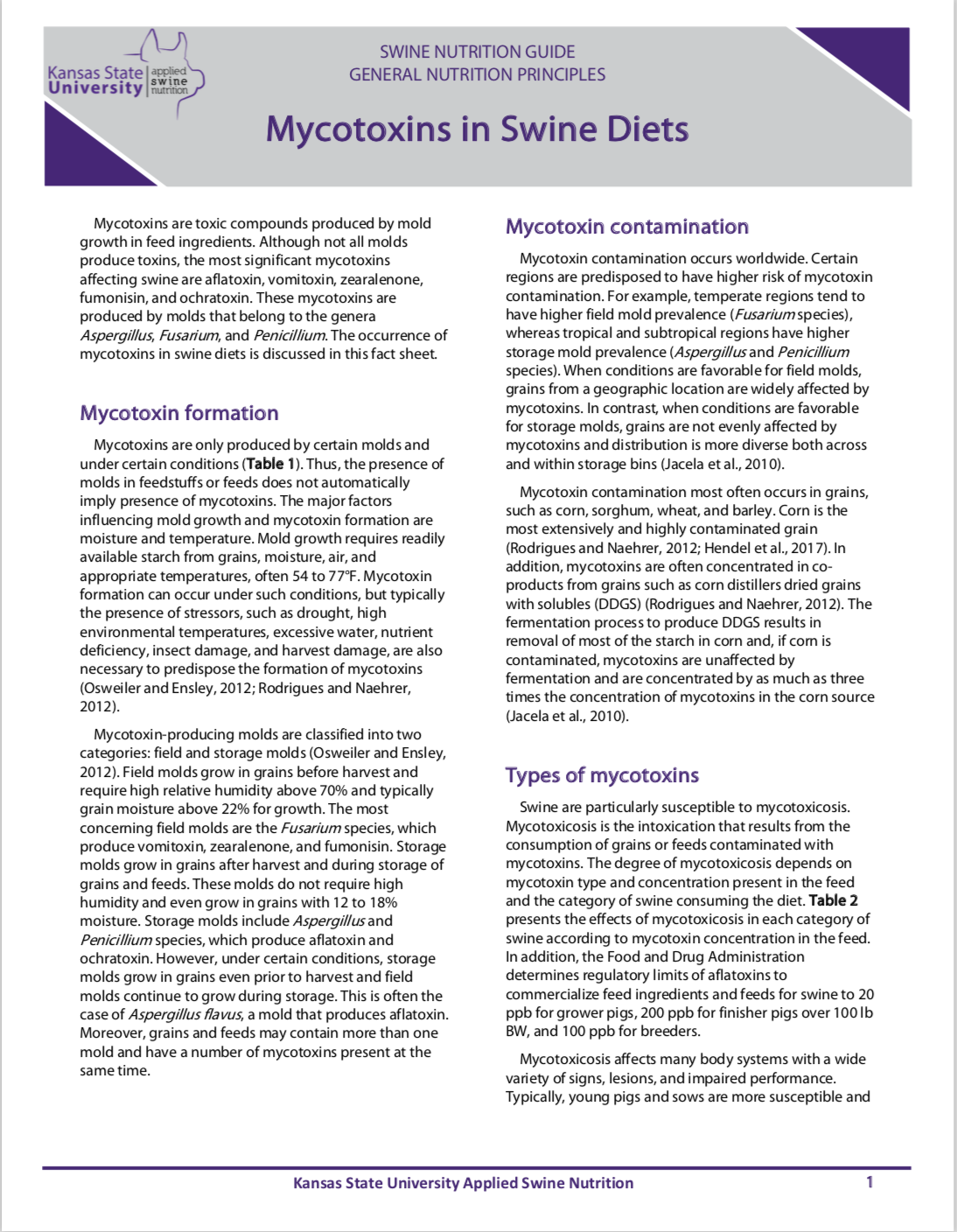Mycotoxin contamination
Mycotoxin contamination occurs worldwide. Certain regions are predisposed to have higher risk of mycotoxin contamination. For example, temperate regions tend to have higher field mold prevalence (Fusarium species), whereas tropical and subtropical regions have higher storage mold prevalence (Aspergillus and Penicillium species). When conditions are favorable for field molds, grains from a geographic location are widely affected by mycotoxins. In contrast, when conditions are favorable for storage molds, grains are not evenly affected by mycotoxins and distribution is more diverse both across and within storage bins (Jacela et al., 2010).
Mycotoxin contamination most often occurs in grains, such as corn, sorghum, wheat, and barley. Corn is the most extensively and highly contaminated grain (Rodrigues and Naehrer, 2012; Hendel et al., 2017). In addition, mycotoxins are often concentrated in co-products from grains such as corn distillers dried grains with solubles (DDGS) (Rodrigues and Naehrer, 2012). The fermentation process to produce DDGS results in removal of most of the starch in corn and, if corn is contaminated, mycotoxins are unaffected by fermentation and are concentrated by as much as three times the concentration of mycotoxins in the corn source (Jacela et al., 2010).
